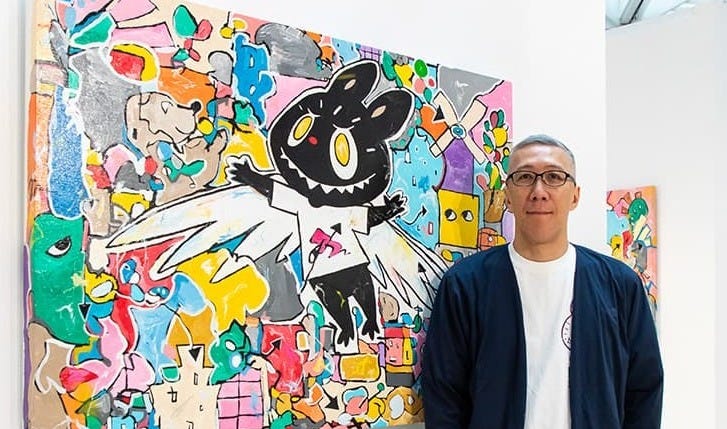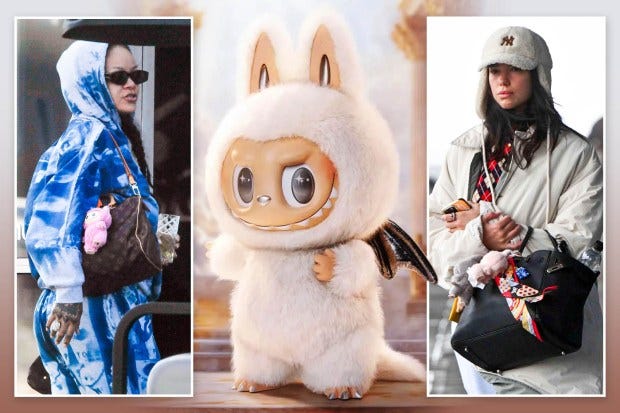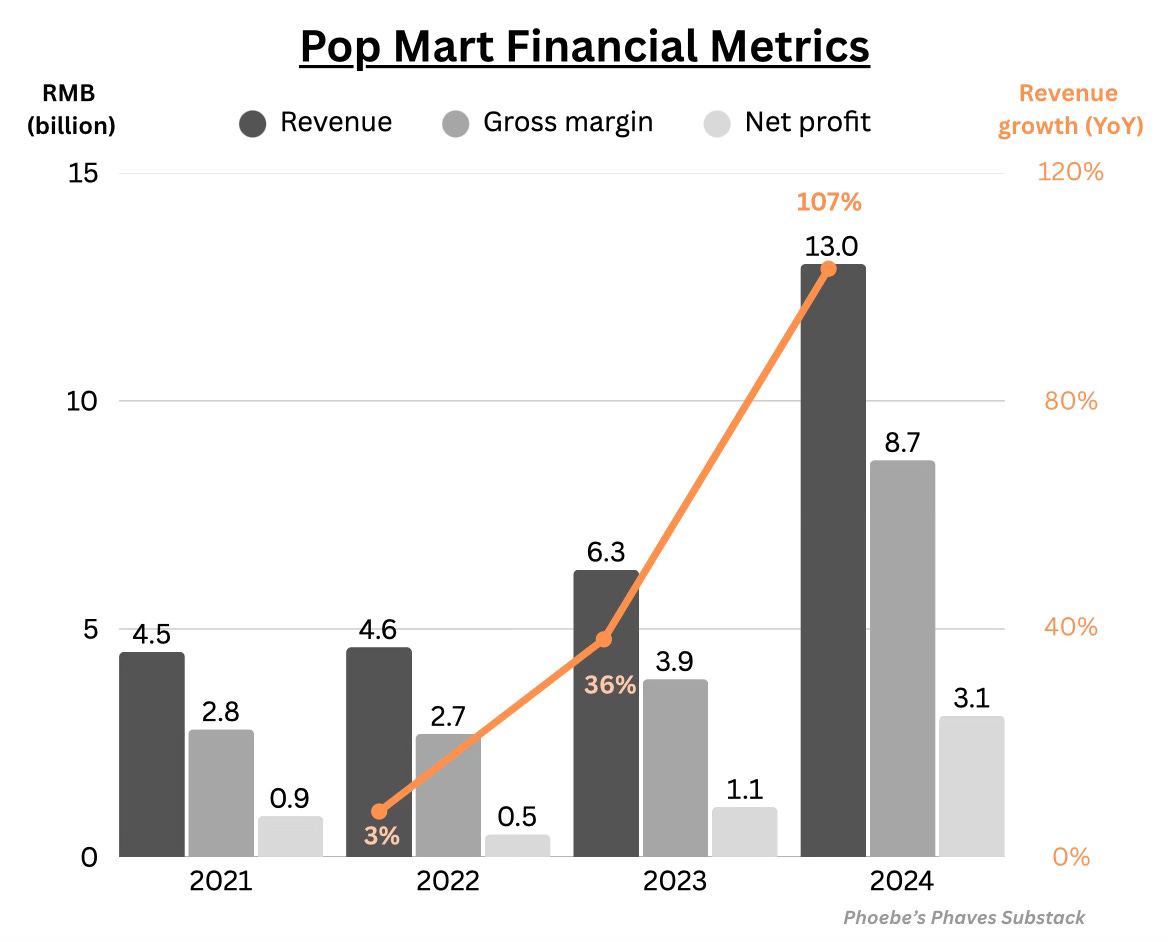The Weird Little Toy That Built a $45 Billion Empire
Why Labubu matters for anyone building products, brands, or businesses
An ugly (cute) toy from China just generated more insights than most Harvard case studies, and made someone $1.6 billion in a single day as the stock price soared.
Meet Labubu. This "ugly cute" creature with pointy teeth and a mischievous grin had Google searches hit 2.1 million last month alone. Celebrities like Rihanna and Dua Lipa carry it like it's a Hermès bag. One rare edition sold at auction for $170,000.
Pop Mart, the company behind it, is now worth $45 billion. That's more than Mattel (Barbie), Sanrio (Hello Kitty), and Hasbro (Transformers) combined.
But Labubu isn’t just a toy craze. It’s a business playbook. And if you’re an entrepreneur, marketer, or builder of any kind. You should be paying attention.
We will cover:
Labubu origin story
Pop Mart's business model breakdown
The unit economics that will make you jealous
Five reasons why this "ugly cute" toy went viral
What we can learn
The Labubu origin story
In 2015, Hong Kong-born artist Kasing Lung created Labubu for an illustrated book series called "The Monsters." He drew inspiration from Nordic fairy tales, shaped by his childhood living in the Netherlands.
Labubu didn't take off right away. But in 2019, Chinese toy company Pop Mart licensed it. That's when the magic began.
Pop Mart didn't just sell a toy. They sold an experience.

Pop Mart's multi-billion business model
Pop Mart is known for selling toys in blind boxes: you pay $28 for a Labubu without knowing which design you'll get. It's merch meets mystery.
That mystery drives addiction.
In just one year, Labubu revenue jumped 726%. Pop Mart stock is up 164%.
Pop Mart owns 13 major IP franchises, with Labubu part of the "Monsters" line. This licensing arrangement with artists allows Pop Mart to produce and distribute merchandise featuring characters like Labubu and others (Molly, Crybaby, etc.)
Pop Mart's financials have grown at an insane level last year, thanks to Labubu. They doubled their revenue to ¥13 billion RMB (~$1.8 billion) and tripled their net profit in 2024.
The company's revenue breakdown reveals their strategy:
Distribution: 58% offline stores, 32% online, 10% wholesale
IP Performance: The Monsters line (Labubu) is the #1 IP, generating ~$420M and representing 23% of total revenue. This line had the fastest revenue growth, jumping 626% from ~$50 million in 2023.
Geography: Majority of sales come from China at 61% of total revenue. North America only accounts for 5.5% of total revenue, but it's the second fastest growing market at 557% YoY growth, right after Southeast Asia's 619%.
They aren't just making toys. They're building a Disney-style IP machine, driven by scarcity, fandom, and brilliant character design.
The unit economics that will make you jealous
Pop Mart's margins are where things get really interesting. Here's what each Labubu looks like (based on company-level financial ratio):
Retail price: ¥99 RMB (~$14). Note: in the US, retail price is at $28
Production cost: ¥33 RMB (~$4.50)
Operating margin: 32%
Compare with 2024 operating margins:
Mattel: 12.9%
Hasbro: 16.7%
LEGO: 25.2%
Sanrio: 35.7%
That puts Pop Mart in elite territory, well above most traditional toy companies.
Most consumer goods companies dream of 15% margins. In fact, the average operating margin of S&P 500 consumer discretionary is only 9%.
This is category-defining profitability. But why? The secret lies in their viral psychology playbook.
Why Labubu went viral: 5 key reasons
This is the perfect case study of how Labubu leveraged consumer psychology, social media, and design to create a viral phenomenon.
1. Variable reward systems
The blind box model taps into intermittent reinforcement. This is the same mechanism that powers slot machines and loot boxes. You're not buying a purple Labubu; you're buying the chance (and thrill) of one.
And with ultra-rare 1-in-72 variants, it becomes compulsive.
It's like Pokemon cards for women: men collect cards hoping for rare holographics, women collect Labubu hoping for different colors and that secret edition.
2. Social media amplification
In April 2024, K-Pop group BLACKPINK's Lisa posted a photo holding a giant Labubu plush to her 100M+ Instagram followers.
Whether it’s organic or not, the timing was perfect. Lisa's young, fashion-forward fanbase is the exact buyer persona.
The hashtag #labubu now powers 1.4M+ TikTok posts, mostly “blind unboxing” videos with suspense, surprise, and emotional payoff.
This is textbook earned virality.
3. Designed scarcity
Labubu is perpetually sold out. (No, it's not “supply chain issues”. Pop Mart has done this successfully for years.)
Pop Mart drops new series every few months. Limited quantities. Fast sellouts.
It creates FOMO and boosts secondary market prices. Some are going for $150–$500+.
4. Status through affordable luxury
Labubu is just expensive enough ($28) to feel special, but still affordable. This is called “affordable luxury” like Glossier, Supreme, or Stanley cups.
Bonus: it doubles as a bag charm.
When Rihanna and Dua Lipa get photographed with it, your keychain just became a status symbol.

5. Strategic imperfect design
Labubu has pointy teeth and a mischievous grin. It's part of the "ugly cute" aesthetic that drives attachment.
Where Hello Kitty is neutral and open to interpretation, Labubu has attitude. Psychologists call this the pratfall effect — flaws make things more likable.
What we can learn from Labubu
Pop Mart's success didn't happen overnight. It took them years of work to get to where they are today.
One might argue that this is just another Beanie Baby 2.0 bubble, but I think there are deeper lessons to take away.
Here are 4 principles worth stealing:
Stack the psychology triggers. Labubu stacked triggers like variable rewards + scarcity + social proof + status. Ask: Could I layer in anticipation, or scarcity, or surprise?
Patience is key. Labubu was created in 2015 but only exploded in 2024. Sometimes ideas need patience and the right environment to thrive, like the TikTok culture, celebrity trends, and global markets.
Engineer shareable moments. Ask yourself: Does my product create a natural “reveal” moment people want to film or share with friends? Can you build in surprise and delight?
Leverage influencer marketing. Can you get influencers in your field to authentically use your product? Not just paid posts, but genuine enthusiasm.
One artist's creation 10 years ago, inspired by Nordic fairy tales, now became part of a $45 billion empire. The key breakthrough isn't the idea. It's the execution. Pop Mart made it a reality and created something people can't stop thinking about.
Is Pop Mart building the next Disney? Or are we watching Beanie Babies 2.0?
Drop a comment. I'd love to hear what you think.
P.S. I snatched three Labubus online while writing this. At first, I thought they were ugly. But now? I kind of want a whole army. (Psychologists call this the mere exposure effect: the more you see something, the more you like it. Even with sharp teeth and goblin-like ears.)







